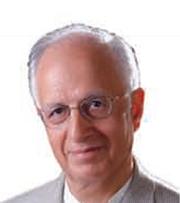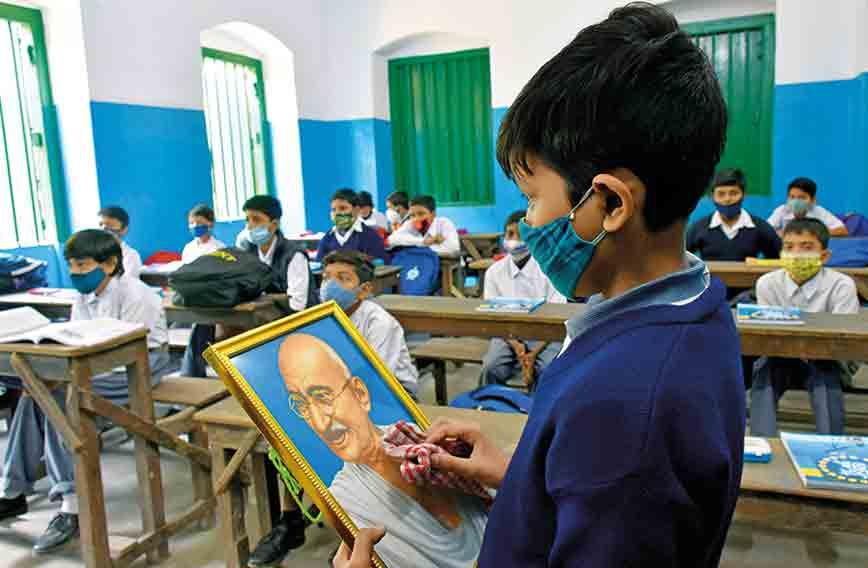
ARUN MAIRA
GENERATIONS to come, it may well be, will scarce believe that such a man as this one ever in flesh and blood walked upon the Earth, said Albert Einstein on Mahatma Gandhi’s 70th birthday.
Four eminent scholars of Gandhi’s ideas — Rajmohan Gandhi, Lord Bhiku Parekh, Prof. Gita Dharampal and Alan Nazareth — and four senior government leaders — former Chief Justice of India M.N. Venkatachaliah, former Vice President Hamid Ansari, former J&K Governor N.N. Vohra and former Foreign Secretary Shyam Saran — reflected together, on January 31, 2022, a day after the Mahatma’s 74th death anniversary, on “The Great Pertinence of Gandhi to India in the 75th Year of India’s Independence”. The seminar was hosted by the India International Centre.
When Gandhi returned to Delhi from Bengal, where he had rushed to stop Hindu-Muslim riots, he was dismayed by the violence erupting amongst Hindus, Muslims and Sikhs in the national capital so soon after the country’s independence. Rajmohan Gandhi recounts that Gandhi was so disheartened he said he did not wish to live until his next birthday. Tragically, before that he himself became a victim of the communal hatred.
All speakers were dismayed that India today seems as divided as in Gandhi’s time. They agreed on the imperative to go beyond recollection of Gandhi’s greatness, as we do annually, to actually applying his ideas.
Gandhi had a vision of a country not divided into fragments by religious and communal walls, and a country in which every Indian, whether rich or poor, could hold their head high in dignity. This was India’s “tryst with destiny” to which the country awoke on August 15, 1947, in Jawaharlal Nehru’s ringing words. Clearly, we yet have “miles to go before we sleep”, in the words of Robert Frost that Nehru kept on his desk.
Nehru and Gandhi were not aligned on the path India should take to its tryst with destiny. Nehru chose the path of large-scale enterprises: the path to progress adopted by most countries — the Soviet Union and the US too. The Soviets and Americans disagreed about who the enterprises should belong to — a people’s government or to capitalist owners. Gandhi recommended another, less travelled by, road to build a free society. He advocated smaller, human-scale enterprises, owned by the people and governed by the people. Gandhi was not against capitalists. He wanted capitalist enterprises to be internally democratic. Moreover, he wanted rich capitalists to be trustees of the wealth that society enables them to create.
Einstein said, “The world as we have created it is a process of our thinking. It cannot be changed without changing our thinking.” Inner transformation must accompany the external transformation one wants in the world. Be the change you want to see in the world, Gandhi said. He was a man of action too. He knew that inner transformation is not enough to change the world. One needs new ideas as well. To change the world, we cannot just be compassionate like Gandhi. We must also think and act like Gandhi.
Gandhi was a systems thinker par excellence. Knowledge, in his mind, could not be divided into silos. Prof. Dharampal pointed out that Gandhi’s ideas contribute to every aspect of life: to philosophy, psychology, science and economics, and to the theory of organization, society and the state.
Lord Parekh cautioned that Gandhi’s practices must not just be mechanically repeated like rituals, nor his ideas repeated like mantras. The underlying principles forming his ideas must be contextualized to drive innovative, contemporary solutions. Therefore, the discussion concluded with a distillation of the principles that are most pertinent today to change the world.
One was that large transformations can be brought about only by large movements, not by large organizations: whereas the widespread theory-in-use, in government, business and even the social sector, is that large change requires large organizations. Catalyzing movements and managing organizations require very different orientations and skills. Aspiring systems transformers on scale must learn how to lead movements, not how to be CEOs of organizations.
Leaders of movements take the first steps towards something they deeply care about, in ways that others wish to follow. Whereas a CEO can use sophisticated carrots and sticks designed by HR experts, movements’ leaders have only their vision and values to draw others to follow them and together create a world all aspire for. Leaders atop large organizations, with large resources, can bestow benefits on people. Thereby they disempower people. People are empowered when they have freedom to bring about change themselves.
The world is beset by multiple problems at the same time: environmental degradation and climate change; social inequities and unequal opportunities; persistent poverty and vulgar inequalities in wealth and income. The problems are intertwined. Therefore, economic, environmental, social and political systems must be changed together. This is complex, no doubt, but that is the only way to produce sustainable transformation.
These multi-faceted problems are manifesting themselves in different ways in different parts of the world. A standard, ‘one size’ solution will not fit all. The vision of all, of the better world they aspire for, may be the same. However, they must take different paths to get there, starting from their different present realities. People must have freedom to choose their own ways. Not only is this empowering, it is the practical way to produce well-rounded solutions rather than theoretical constructs from distant experts in silos. Ergo, Gandhi’s way of local systems solutions cooperatively developed and implemented by communities is the solution to the multifarious challenges that India and the world are facing.
Consensus about the vision of their country, and consensus about how citizens will work together to realize their vision is the essence of a democratic society. The British divided us to rule: why must we divide ourselves again? India’s beauty is its diversity. We must maintain it and work together to meet our tryst with destiny. In Gandhi’s conception of a genuinely democratic society, citizens would listen to the views of people who are unlike them and respect others’ cultures. Mahatma Gandhi is a remarkable role model for the whole world to look up to. And his ideas can guide us onto a better path.
Arun Maira is the author of 'A Billion Fireflies: Critical Conversations to Shape a New Post-pandemic World.'
Comments
Currently there are no Comments. Be first to write a comment!




